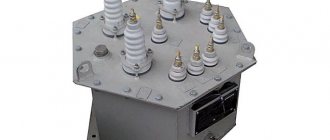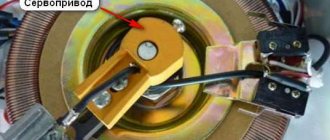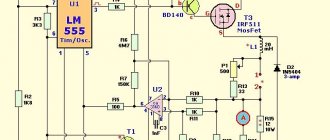Voltage sags can cause serious problems, such as disruption of production processes and loss of quality. Such failures occur much more often than interruptions. The economic consequences of voltage sags are often greatly underestimated. But what exactly is a voltage dip? How does voltage dip occur? Is it possible to prevent voltage sags or should we try to limit the possible damage through early detection? This article covers these issues in detail.
Voltage sags
Voltage sags can cause serious problems, such as disruption of production processes and loss of quality. Such failures occur much more often than interruptions. The economic consequences of voltage sags are often greatly underestimated. But what exactly is a voltage dip? How does voltage dip occur? Is it possible to prevent voltage sags or should we try to limit the possible damage through early detection? This article covers these issues in detail.
Measurement procedure
Let us immediately note that persons with special training and an established form of admission are allowed to take measurements. Simply put, the measurement procedure is performed by a highly qualified electrician. If there is an urgent need to do everything yourself, then you must first carefully calibrate the megger. A device that shows inaccurate data can serve you poorly. Using the device, several measurements of insulation resistance are made:
Table of permissible current loads.
- between phases;
- between phase and zero;
- between zero and ground;
- between phase and ground.
For clarity, it is worth describing the entire method of measuring insulation using the example of a power cable. First you should check the cable for voltage absence. We connect one contact of the megger to the cable core being tested. We connect the remaining cores to each other and connect the second contact of the device to one core (not the one being tested). Set the sensitivity of the device (estimated) and turn it on. The measurement is taken within one minute.
In a similar way, you can study the insulation of electrical wiring in other cases. We observe one condition: the bare ends of the electrical wiring (if any) must be separated as much as possible.
What is a voltage dip?
According to the European standard EN 50160, a voltage dip is defined as a sudden decrease in effective voltage values to a value between 90% and 1% of the set value, followed by immediate voltage recovery. The duration of the voltage dip ranges from half a period (10 ms) to a minute.
Rice. 1 Example of voltage dip
If the effective voltage value does not fall below 90% of the set value, it is considered normal operating condition. If the voltage drops below 1% of the set value, it is considered an interruption.
Therefore, a voltage dip should not be confused with an interruption. The interruption occurs, for example, after a fuse has tripped (typically 300 ms). A power outage in the network propagates in the form of a voltage dip throughout the rest of the electrical distribution network.
The figure (Fig. 2) clarifies the difference between a sag, a short interruption, and a low voltage.
Rice. 2: Difference between sag, interruption and undervoltage
Definition of the concept
Voltage reduction is a phenomenon in which at a certain point or section of the electrical network the voltage sharply decreases. After a decline, the value is restored to close, required values within a certain, short period of time, usually taking no more than 20-30 seconds.
The voltage may be at nominal values, or it may be significant when a phenomenon occurs. The relationship between these values is characterized by depth and duration, which are key parameters in characterizing this phenomenon.
The duration in dips is the time interval between the beginning and the moment when the voltage is restored to the required nominal value.
Depth values can range from ten to one hundred percent. The duration may also vary, but usually does not exceed several tens of seconds.
There is also a characteristic expressed in how often voltage decreases appear in the network. This is an auxiliary parameter, which is characterized by how many times this will happen on the network over a certain time period.
How does voltage dip occur?
1. Turn-on currents
One known cause of small voltage dips is switching currents from capacitors, motors, or other devices. In the following figure you can see that when the engine starts, the current increases for a short time. The voltage drop across impedances Z and Z1 results in a slight voltage dip across the low voltage distributor (dip zone 1) and a slightly larger voltage dip behind impedance Z1 (dip zone 2).
Rice. 3 “Starting” motors can lead to voltage failure
The solution to problems caused by such failures is to optimize the installation. Turning on devices should not lead to critical voltage dips.
2. Short circuits in the low voltage network
When there is a short circuit in the low voltage network, short circuit current flows. The contribution of the short circuit current depends on the value of the impedances Z and Z3. In practice, the impedance of Z3 is greater. The size of the impedance Z3 is determined in part by the type and length of the cable. The longer the cable, the lower the short circuit current will be.
The short circuit current causes a voltage drop across the impedance Z, and a short-term voltage dip is observed at the main low voltage distributor (dip zone 1).
In the event of a short circuit, the fuse of group 3 should trip. If 100 ms elapse before the fuse trips, then a strong voltage dip of 100 ms is observed throughout the entire installation.
Rice. 4 Typical example of an operating condition in which a voltage dip occurs as a result of a short circuit in the low voltage network
Although short circuits occur in low voltage networks, they are often ignored in practice. Short circuits in medium voltage networks are more critical.
3. Short circuits in the medium voltage network
Most often, voltage dips are observed in medium voltage networks. They can be caused, in particular, by the following factors:
- earthworks,
- breakdown of the coupling,
- cable aging,
- short circuit in air networks (storms, animals, etc.)
The following figure (Figure 5) shows a typical medium voltage network structure. Known transformer boxes/local distribution substations (green dots) are connected to each other in a ring and connected to the distribution station (blue dots). There is always a gap in the ring (see the ring of green dots at the bottom right). When a short circuit occurs, short circuit current (red line) flows through the circuit. It leaks until the fuse at the distribution station turns off the ring. This is shown in the left picture (in the ring at the top left).
Thus, during a short circuit, a high current flows briefly. Due to the network impedances, this leads to a short-term voltage drop in the entire network. This short-term decrease in voltage is expressed in the form of a "voltage dip".
Rice. 5 Most voltage sags are caused by short circuits in the medium voltage network
About 75% of voltage sags occur in the medium voltage network. They are often unavoidable for the consumer.
Short circuits in high voltage networks
Short circuits in high voltage networks are often caused by thunderstorms or (faulty) switching on. The latter are usually observed at the ends of high voltage lines.
Stripping fluoroplastic insulation
PTFE insulation is a chemically produced polymer. Has a number of positive properties. For example, it does not get wet in water and is highly resistant to various organic substances. Its parameters allow it to be resistant to temperatures up to 300 °C. It is an ideal electrical dielectric. However, there is one main drawback - cost. It is precisely because of its high price that it is used only in exceptional cases. In everyday conditions, radio amateurs fell in love with it, because. after soldering, it has an aesthetic appearance, does not melt, and takes up little space.
The fluoroplastic itself appears in the form of a narrow thin strip, which is tightly wound around a stranded core. The fluoroplastic version can only be removed with a knife. It is scraped down to the length you need. After it is exposed, the shell is taken aside and the remains are cut off.
Please pay attention! Fabric or rubber insulation can be removed using any of the methods described above. The main task is to prevent cuts in the main core.
Voltage sags problems
Voltage sags can cause failure of computer systems, PLC systems, relays and frequency converters. In critical processes, just one voltage dip can cause high costs, especially continuous processes.
Examples of this include injection molding, extrusion processes, printing or processing of food products such as milk, beer or soft drinks.
The costs associated with a voltage dip consist of:
- lost profits as a result of idle production facilities,
- costs for restarting the production process,
- costs associated with delays in product deliveries,
- costs for spoiled raw materials,
- costs for eliminating damage caused to machines, devices and matrices,
- maintenance and labor costs.
The average cost of a voltage sag varies greatly by industry:
- fine chemistry 190,000 euros
- microprocessors 100,000 euros
- metalworking 35,000 euros
- textile industry 20,000 euros
- food industry 18,000 euros
Often processes take place without the presence of people, so voltage dips are not immediately detected. In this case, for example, the injection molding machine can stop unnoticed. By the time the shutdown is discovered, significant damage has already been done.
Customers will receive products too late and the plastic in the machine will harden. In printing houses or in the paper industry, paper can rip, which can even lead to a fire. Another well-known example is the damage caused to the tire manufacturer Vredestein as a result of voltage sags. www.rtvoost.nl
"Evil" car
Very often, a static discharge spark jumps between the car and the motorist (passenger). What should you do if your car constantly shocks you? How to remove static electricity from a car so that every time you get out of the car, it doesn’t “bite” you goodbye?
Here the problem, again, lies in you, that is, in your behavior behind the wheel and in the materials from which the car seat covers or the seat itself are made. When you're behind the wheel, you're still moving, creating friction. A charge accumulates in you, and the rubber mats of the car prevent discharge, and the voltage remains in you the entire time you are in the car, until you, getting out of it, touch part of your body to the metal body of the car. At this moment, discharge occurs. There is little pleasant, and therefore you should stock up on special means for treating car seats. These antistatic agents come in the form of aerosols. By spraying this product on your seat covers, you will prevent them from accumulating a positive charge during friction.
But a car is a thing that can itself accumulate static, especially in dry weather. To prevent this from happening and your car not to shock you in vain, buy a special strip (strap) at an auto parts store, which is attached under the rear bumper and is powered to the body of the car. Current types of antistatic straps are even attached to the exhaust pipe. The tip of such a strip, constantly in contact with the ground, will prevent the accumulation of static in the body.
Vulnerability of IT installations to power sags and interruptions
IT installations are particularly susceptible to voltage sags and interruptions. This means that all microprocessor-controlled processes are vulnerable to these failures, e.g.
- PLC installations,
- frequency converters,
- machine control systems,
- servers, PCs, etc.
The Information Technology Industry Council's ITI-CBEMA curve shows when a voltage dip causes IT device failure and when a voltage spike causes IT device damage. Although the model was designed for 120 V-60 Hz networks, it is also used for devices connected to 230 V-50 Hz networks. The model can be used by manufacturers as a design guide.
Rice. 6 ITI curve (CBEMA) shows when voltage sags cause IT equipment failure
How can you counteract voltage dips? Voltage sags resulting from switching currents can be limited to a certain extent by improving the design of the installation. Voltage dips as a result of short circuits in low voltage networks occur, as a rule, extremely rarely. Most voltage sags are caused by faults in the medium voltage network. It is impossible to influence the causes of such failures.
The failures themselves can be eliminated using the following devices:
- Static UPS, a constant voltage source with an inverter connected behind it. This solution is often used to transfer to emergency power from a standby unit.
- Flywheel operating synchronously under load (dynamic UPS). During a brief interruption or failure, energy comes from the flywheel. This solution is not cheap and is often used in data centers.
- Connection of process control and regulating units to a stabilized power source.
- Retrofitting electrical infrastructure. This is not always possible and, of course, is not cheap.
Based on this, it is clear that eliminating voltage dips is not cheap. Therefore, timely detection of voltage dips can be very useful. With the help of a good reporting tool, you can identify the causes and take targeted (and therefore more cost-effective) measures.
Remove insulation by melting
If you need to remove insulating material and you have a soldering iron on hand, then you can use the thermal method. To do this, simply heat up the soldering iron and run the tip along the plastic insulation. Naturally, after heating, you can easily remove the melted sheath from a copper wire or any other wire. Using this method will not compromise its integrity in any way. But if you need to strip a large number of conductors with a similar winding, you can use a special device. For example, a wood burner, formerly known as “Pattern,” is perfect.
Using this method is relevant for old material. When it is used for too long, the winding becomes brittle and rigid. Moreover, most often, the wires protrude from the junction box only a couple of centimeters, so that neither a knife nor wire cutters can remove them. But if you just use a lighter or a soldering iron, then you can easily remove what you have in mind.
Voltage failure signals
Janitza offers a wide range of analyzers capable of detecting short interruptions and voltage sags. The UMG 604 network analyzer continuously monitors more than 800 electrical characteristics. All channels are checked 20,000 times per second, and short interruptions and voltage dips are recorded and appropriate warnings are issued. Based on these events, an email or SMS can be sent. The included GridVis-Basic software package allows you to generate detailed reports.
Rice. 7 The compact network analyzer UMG 604 is available to alert you to voltage dips
The UMG 604 analyzer, installed on the power input panel, provides a large-scale and cost-effective solution for recognizing, recording, signaling and reporting voltage sags. The measuring device is equipped with a web server, which makes it possible to directly call up the most important parameters from the measuring devices at low cost and without the need for complex software. Using the built-in event browser, voltage sags and interruptions can be analyzed and documented in the form of reports.
Rice. 8 Network analyzer on the power input panel detects voltage anomalies
Janitza offers the following measuring devices for detecting short-term interruptions:
- UMG 604, compact network analyzer for DIN rail mounting
- UMG 508, network analyzer with color screen and intuitive operation for panel mounting
- UMG 605, Class A network quality analyzer for DIN rail mounting
- UMG 511, class A network quality analyzer with color screen and intuitive operation for panel mounting
Analysis with GridVis
The basic GridVis software package (GridVis-Basic) is supplied free of charge with Janitza measuring devices. With this package, in particular, you can:
- read measurement values in real time,
- request archived measurement data in the form of files and graphs,
- analyze short-term interruptions, transient voltages and voltage dips,
- print full EN 50160 reports “at the touch of a button” and
- generate simple quality/error reports.
Rice. 9 Even large-scale analysis can be performed with GridVis.
Using the built-in report generator, even intermittent voltage dips, short interruptions and voltage peaks can be combined into clear reports using the ITI-(CBEMA) curve.
The figure below (Fig. 10) shows that three voltage dips occurred, which led to the plant stopping.
Fig. 10 Voltage sags and peaks report based on ITI curve
Danger of static electricity
Few people know that when a plane lands on the ground, an iron chain is first thrown from the airliner. When the chain comes into contact with the ground, numerous sparks come from it. In other words, they remove static electricity from the airliner (in modern aircraft, grounding occurs automatically).
If this is not done and a person touches the body of the aircraft, the person can be electrocuted. The body of an airliner acquires such a strong charge. The same applies to ordinary cars (I don’t mean that a person can be electrocuted, but given a decent jolt). Have you noticed that when a fuel tanker is driving, there is an iron chain behind it?
The chain rattles, and many grandmothers say: “Slob, I drove and didn’t catch the chain!” In fact, the circuit creates grounding. Gasoline is such a substance that all it takes is one small spark and an explosion can occur in the tank! This is especially true for gas stations. You should not refuel your car wearing synthetic clothing!
Also, I think many of you have noticed that sparks sometimes fly when shaking hands. All this is not only unpleasant, but also dangerous, in our case, for computers. Especially for RAM boards. They may fail completely.
Therefore, most PC components should be stored and sold in special antistatic bags. They are usually gray-silver in color. When purchasing operational boards, it is advisable not to touch them with your hands. Take the antistatic bag and examine the boards.
Don't let the seller take the boards and then give them to you. If he took the payment in his hands, let him put it on the table. Only after this can the buyer take it (although in reality, this rule is rarely observed).
Also, static electricity is dangerous for laptops. There have been cases when a cat took a walk, its fur absorbed a static charge, and then the cat jumped on the laptop. After that, the laptop crashed. Keep laptops away from cats!
In general, you shouldn’t disassemble laptops yourself. Especially modern ones, with solid bodies. Replacing boards in such laptops is difficult, even for specialists.
Bottom line
Voltage sags occur relatively frequently and are not always recognized. The economic damage from voltage sags is greater than from interruptions. By retrofitting the electrical infrastructure, a wide range of voltage sags can be prevented. Using uninterruptible power supplies or choking coils can reduce the damage caused by voltage sags. In some cases, these measures seem too costly. The first step, however, is always to recognize and document voltage sags. Janitza offers turnkey solutions that enable continuous monitoring and analysis of all production processes in a sustainable and reliable manner.
Through the use of modern measuring devices, problems related to voltage quality can be detected and eliminated in a timely manner. Improved power supply reliability is guaranteed, maintenance costs are reduced and the service life of the production plant is extended.
Definition of the term
This concept means sudden changes in mains voltage that go beyond the permissible deviations. Let us remind you that, according to current standards, permissible voltage deviations should not exceed the nominal value, and the maximum permissible ones - Actually, the parameters characterizing quality voltage are indicated in the contract for the provision of services. At the same time, the description of permissible limits should not contradict current standards.
This definition includes short-term overvoltage and undervoltage, as well as deviations (lasting more than a minute) and fluctuations (lasting less than a minute). Pulse overvoltages, called surges, also fit this description.
Voltage surges have a negative impact on voltage quality
Power surges
Voltage surges in everyday speech are usually called a sharp (rapid) significant change in the voltage value. Typically, a voltage surge refers to a rapid, significant increase in voltage. We do not have a legally precise definition of the concept of “voltage surge”. Typically, lawyers understand a “voltage surge” as a deviation in the quality of supplied electricity from the requirements of regulatory documentation.
As a rule, in judicial practice we are talking about power surges that caused damage.
There is also no clear definition of a “voltage surge” in the regulatory documentation. Industry regulatory documentation distinguishes the following deviations of power supply parameters from the norm: voltage deviations and fluctuations, overvoltage.
A “voltage excursion” is a change in amplitude lasting more than 1 minute. There are normally permissible voltage deviations and maximum permissible voltage deviations. In this case, the maximum permissible deviation is 10% from the nominal value.
“Voltage fluctuation” is a change in amplitude lasting less than 1 minute. There are normally permissible voltage fluctuations and maximum permissible voltage fluctuations. In this case, the maximum permissible deviation is 10% from the nominal value.
Overvoltage
“Overvoltage” is a significant increase in amplitude of current parameters. Overvoltage is considered to be an increase in voltage above 242 Volts. Overvoltage can last for less than 1 second.
Thus, combining the regulatory definitions of an electrical voltage surge and the legal understanding of this concept, we can say that surges can be called both not very large, but long-term changes in the voltage value, and short-term, but significant excesses of this parameter. The latter can also be called “impulse jumps”.
From a physics point of view, what is important is the total excess energy acting on devices that consume current. It is this energy caused by a surge in the network that causes damage to connected electrical appliances.











